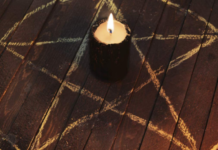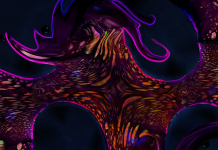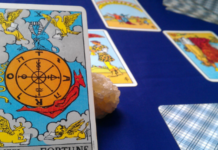
Celtic Astrology: How the Mystical Power of the Druid Tree Signs Can Transform Your Life
, by Phyllis Vega
New Page Books, 2002
One of the things I liked about this book is the assumption on the part of Ms. Vega that she shouldn’t assume anything about the basic knowledge of her readers. She doesn’t assume that everyone knows the “standard” astrological dates and attributes. On the other hand, she doesn’t assume that her readers have no basic background. She walks the fine middle line by giving out basic details without being condescending about it. She does a fine job of contrasting the “normal” astrological types with the types associated with the Celtic astrology.
Make no mistake. This is not an astrological book in the usual sense of the word. There are no calculations to make; no charts to cast; no planetary alignments to be concerned about. It simply breaks humanity into the thirteen types associated with the Celtic Tree Calendar (plus the Nameless Day). This makes it easy to compare general sun sign attributes with Tree sign attributes.
She feels that the sun sign represents the outer qualities in an individual – those that the world sees and reacts to, while the Tree sign represents the inner qualities – those that affect how you react to the world.
On a non-astrological note, Ms. Vega does not fall into the trap all too many other authors have of assuming that the Celtic world consisted of a homogeneous, matriarchal society, with established sacred schools of learning. She acknowledges the patriarchal basis of the Celtic world, without insisting on a matriarchal or balanced role of the sexes. Neither does she claim an advanced social agenda on the behalf of the Celts, although she does give a nod to their technological innovations and advancements.
Unlike many books on either of these topics (Celtic studies and/or astrology), this book is an easy, enjoyable read. When this book arrived, I figured I was in for a difficult reading, especially as I am not a big astrology fan. I was pleasantly surprised at how easy Ms. Vega made it to understand. It contains a lot of food for thought and will encourage the reader to stretch his or her mind. It is not, however, a fluff book. It contains a great deal which is usable by almost anyone.
She does rely extensively on The White Goddess by Robert Graves for her information on the Ogham alphabet. While this is an extremely popular work, there are significant questions about its validity on a factual level. Graves himself acknowledged that he was writing as a poet, not a historian.
Ms. Vega relates basic stories of each of the deities associated with the thirteen trees, which compose the tree alphabet, as well as explaining about each of the animals associated with each of them.
She shows the correspondence between the Celtic tree astrology and the more traditional zodiac. She takes the time to give thumbnail sketches of the traditional signs in language, which is easy to understand, and entertaining to boot. Nor does she sugar coat the shortcomings we all have. She does her best to present things in a positive light, without the cloying sweetness and light, which is so prevalent in many books today.
The exercises and techniques she sets out for each of the tree/sun sign combinations are easy and fun to do. They do not involve strenuous occult exercises and beliefs. She runs the gamut from healing baths to chakra balancing, with guided meditations and simple charm construction thrown in for good measure. All of these are designed to made use of regardless of the reader’s religious orientation, if any.
Once again, I have to state that this not your standard astrology book. It is, however, a handy companion to help one understand all of the influences that affect our daily lives. And, given the popularity of Celtic orientation in the modern Pagan world, it should find a home on many bookshelves. Just don’t let it sit there, though. Take it down periodically and re-explore the offerings contained within these covers.








